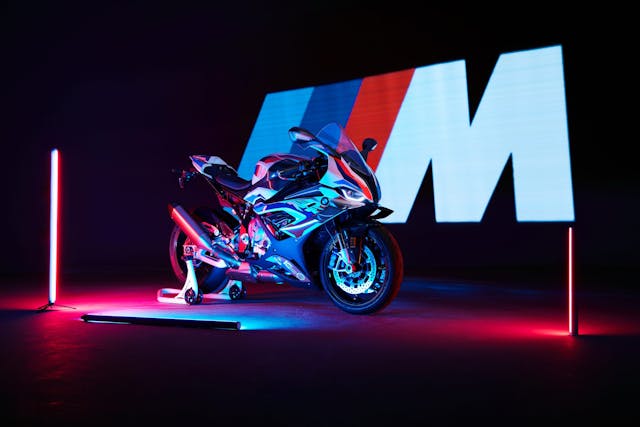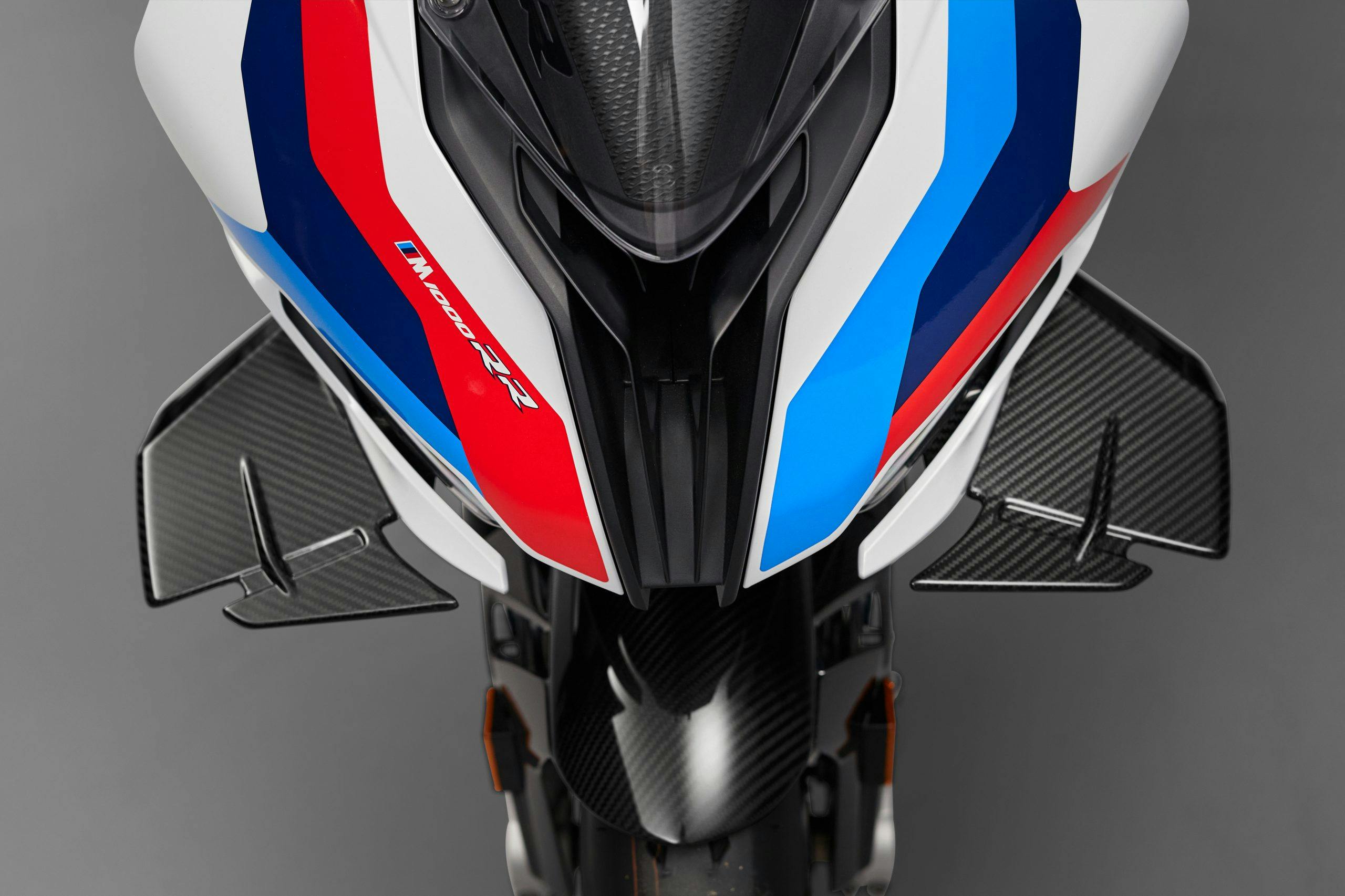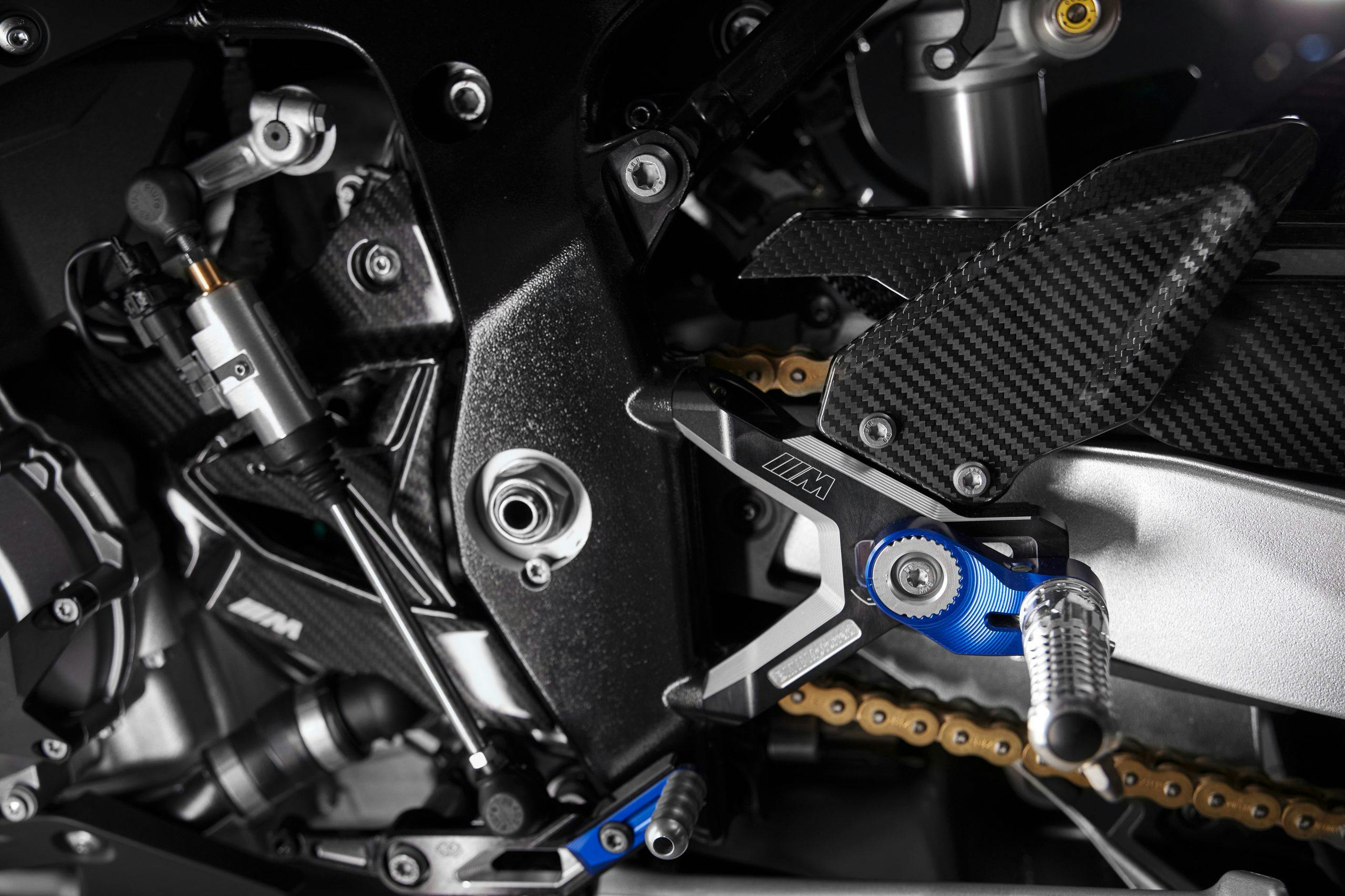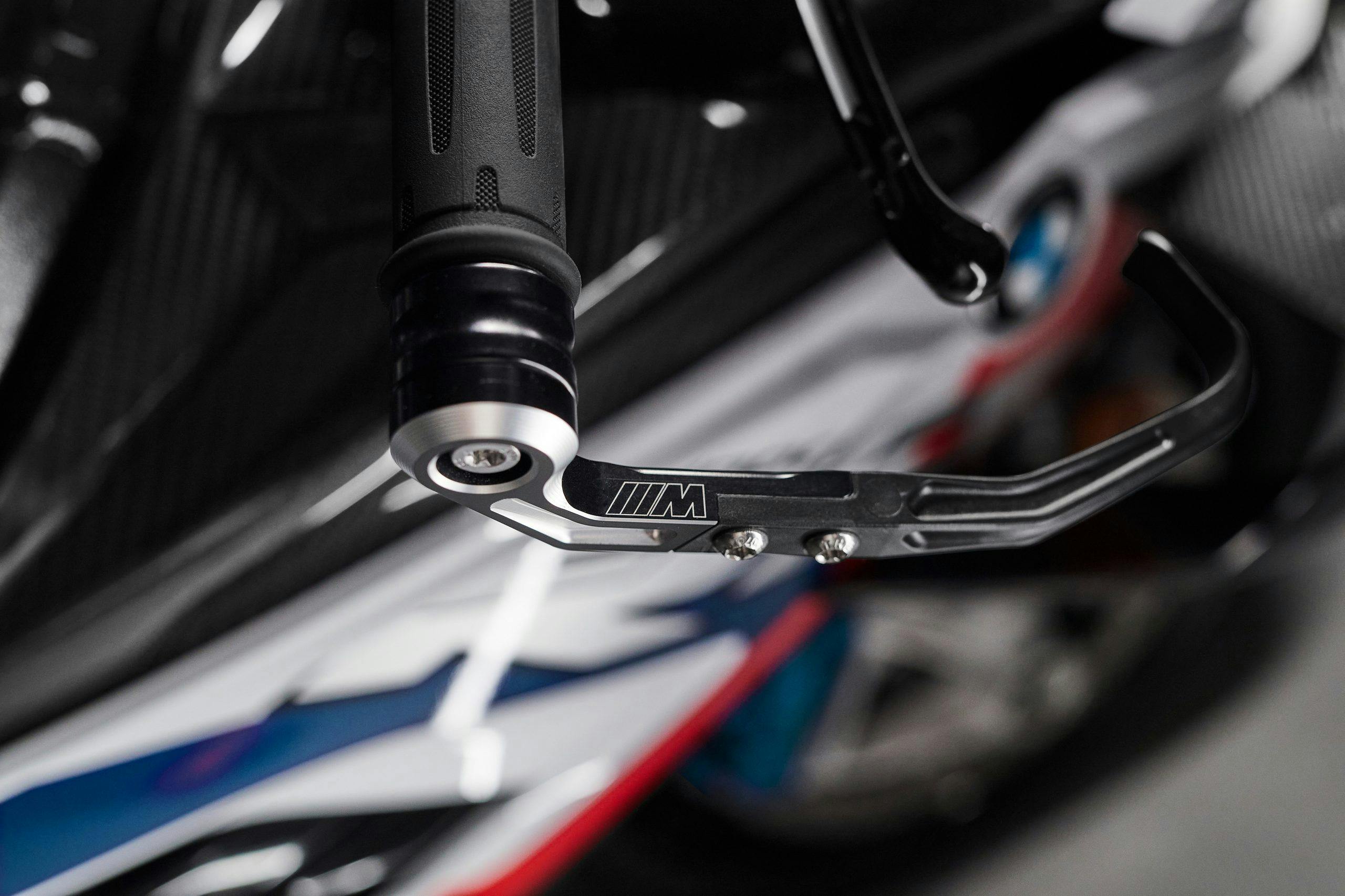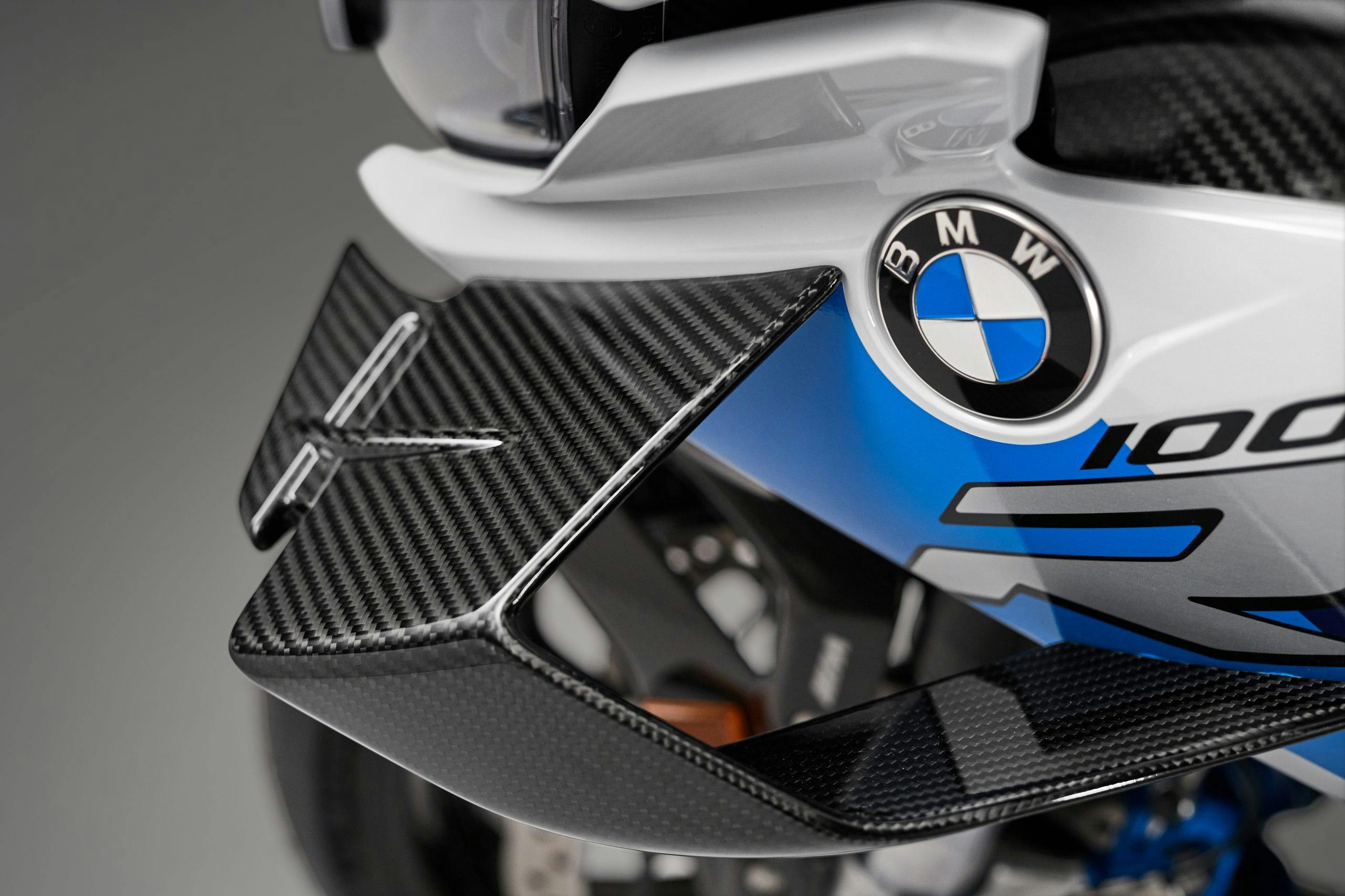The S 1000RR is the latest vehicle to wear BMW’s M badge—and that’s just fine with us
First established to support BMW’s racing efforts in the 1970s, BMW Motorsport GmbH built a reputation for producing track-prepared vehicles with a small dose of street manners. Now, the M badge has spread far and wide within the BMW lineup—you’re equally likely to find it on the rump of an SUV or on the decklid of a coupe. That proliferation of M-branded vehicles means that I’m a little surprised the hallowed M has just made it onto the S 1000RR motorcycle.
Does badge really belong on the bike, though?
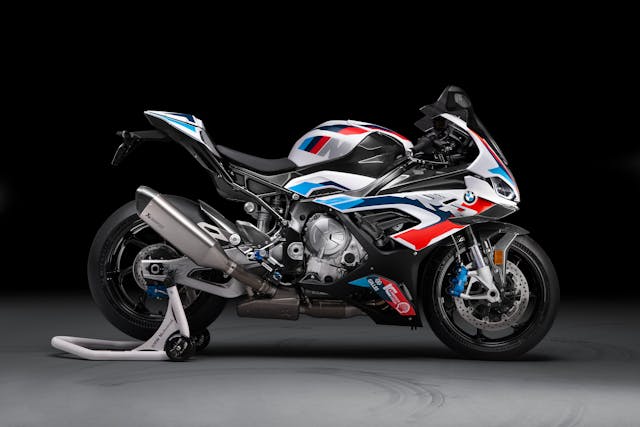
BMW Motorsport GmbH—it’s worth noting that the division is an independent subsidiary of BMW AG—was established in 1972 to build the wildest race cars it could based on BMW’s production lineup. For decades, the M badge graced only naturally aspirated, rear-wheel-drive sedans and coupes—no trucks. Executives said the badge would never cross that line. Then, in 2010, the all-wheel-drive X5 M co-opted the badge (though it and its X6 sibling were engineered by the BMW Group, not the M division). Four years later, BMW M Gmbh owned the X5 M and X6 M as official M-division vehicles. The floodgates opened, and the time-honored definition of an M vehicle changed to include turbocharged powertrains, all-wheel drive, and high-riding SUVs.
I’m not exactly pleased that the M badge now graces monstrous SUVs that will, for the most part, never see a track day; but if that’s what is going to happen, the 1000RR deserves a share in the spoils. It may have two wheel instead of four, but this bike is now one of the purest contemporary interpretations of the original M formula: it’s rear-wheel-drive, naturally aspirated, and highly track-focused with just a hint of street manners. Better yet, the 1000RR has adhered to this recipe since its introduction back in 2009.
The M 1000RR is delightfully trick and a perfect fit.
To start, the M 1000RR has all the CNC-cut and branded aluminum bits you could possibly handle. The carbon-fiber wheels and uprated braking system (the latter supposedly distilled from the World Superbike S1000RR) are properly awesome. The MotoGP-style winglets are a bit much, especially for something street-legal, but what rider astride this machine is not going to brag about the 35 pounds of added downforce at a mind-bending 189 mph? Of course, feather-light titanium comprises the exhaust system as well as the connecting rods for the four-cylinder engine, which cranks out 212 hp.
Those are just the high points, too. The M 1000RR is truly a track-optimized machine—at least on paper. We don’t yet know how it will ride, but all signs point to this bike being downright fast.
Hopefully, you agree with me and will embrace the M 1000RR with open arms—even if you find it entirely outside your budget. BMW hasn’t yet announced pricing, but the 2021 S 1000RR stickers at $17,490 (destination included), and you can expect the M-division upgrades to add a hefty premium. As unattainable as it may prove, I’m still glad the M 1000RR exists, in all its absurdity.
